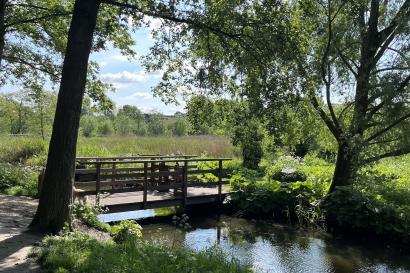
Amsterdam is a city known for its progressive tolerance. From the legalization of sex work, relaxed drugs laws, and LGBTQ history, Amsterdam is unique in many ways. Although often praised as utopian, when it comes to matters of race and anti-blackness, Amsterdam, like most countries, has its issues. Below is an overview of my experiences and what I’ve learned so far here.
History
The history of the Netherlands, like most of the Western world, is shaped by slavery. Its Golden Age is an era often praised for its art, trade, and military. This period of wealth and creation of national idenity was also contextualized by the horrors of slavery, colonization, and supremacy. In Amsterdam, the Dutch West India company heavily participated in the transatlantic slave trade and financed many prominent industiries in Amsterdam. This influence still shows in the landscape of the city and country itself. Dutch processes of colonization and slavery where especially prominent in places like Surinam, a prominent Dutch colony that did not recieve independence until 1975. Unlike in the United States, where physical slaves were more present in the landscape, the Dutch had less interaction with slaves and their colonized subjects shaping how they view anti-black racism and their colonial past.
Signs and Symbols of Anti-Blackness in the Netherlands
It's not possible to walk around Amsterdam without seeing visible signs of participation in colonization, slavery, and anti-blackness. From art glorfying the 17th century wealth built upon slavery, to historic sites such as Royal Palace on the Dam, the former headquarters of the Dutch West India Company, Amsterdam's past is inescapable. This is the same with most of Europe, America, and the Western world. Two of the biggest signs of anti-blackness I’ve encountered, however, have been the prominence of Zwart Piet and Dutch Gapers.
Zwart Piet
Zwart Piet is a black face caricature that's been given a prominent place in the Christmas traditions of the Netherlands. Zwart Piet, or “Black Pete,” is traditionally thought of as an assistant to Santa in the delivery of gifts. Many people have tried to justify Black Pete excusing the dark color of his skin as not black face but chimney soot, but Black Pete was originally created as a slave character and a Spanish Moor.
I visited Amsterdam during the summer, so I did not see visible signs of Black Pete in the city, nor was I overly bombarded with imagery and stories about him in general. In Amsterdam, movements rallying against Black Pete have really grown in visibility.
However, it's not uncommon for people to converse about it. My hardest interactions with Black Pete were the times I would find myself pushed into a conversation about Black Pete and asked about my opinions on it.
Gapers
Gapers are figureheads oftentimes found at older drug stores and pharmacies. Their mouths are typically open to receive medicine. They are typically depicted as Moors, North Africans, or Muslims and first appeared in the 16th century.
Unlike Zwart Piet, gapers aren’t widely recognized as racist or black face by the Dutch. I came into contact with this one while in Haarlem and personally felt as though it was a black face depiction. The history of these figureheads isn’t well known, though.
Nationality and Religion
Being black in the Netherlands involves understanding that there are so many different types of being black in Amsterdam. Because Amsterdam’s migrant culture is so strong, national identity and concepts surrounding that are oftentimes intertwined processes of racialization. For instance, being a black American is profoundly different from being a black Morracan. Being a black person, a foreigner, and from a Western country affords you more privileges.
Being Black in Amsterdam
Being black in Amsterdam has not felt extremely different then being black in the east coast of the United States, which has more of a colonial past. There are many black people here, only nationality is more recognized in interaction. Neighborhoods like Oost are where many black people in the city congregate and are great to visit. Amsterdam has a reputation for being a very tolerant nation. This tolerance should not be understood as without anti-blackness. Just this year Amsterdam's government announced that it plans to apologize for its role in the slave trade, but for cities like Amsterdam and the rest of the West, there is still a long way to go.

Gillian Giles
<p>I’m 21 years old and just starting to explore the world outside the United States! Currently I attend Sarah Lawrence College as a junior studying Sociology. I’ve always enjoyed a good book, story or adventure and plan on collecting many new stories while I’m abroad. I cherish empathy, kindness and good listening. I’ve experimented with art, style and writing and am always looking for new ways to express and explore myself. I firmly believe that understanding yourself also means understanding your context and the world around you and I am looking to continuously do that through travel. As an IES correspondent I hope to provide content that both tells a story about the places I’ve been and show chases a my perspective as someone whose black, LGBTQ and disabled.</p>







